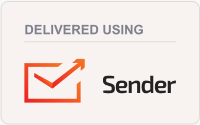We are also excited to announce an upcoming webinar on HydroSphereAI, our machine-learning-driven hydrological forecasting tool.
This month also saw the release of another dataset on the Canada1Water data portal. This high-resolution dataset (1/12th degree) provides monthly total precipitation and minimum/maximum temperatures across Canada and the U.S. from 1991–2020, providing a standardized baseline for hydrological modelling and climate assessments.
With so many exciting developments, we look forward to continuing these conversations with our partners, clients, and the broader water resources community. As always, if you’re working on a study using HydroGeoSphere (HGS) and are interested in presenting in a future webinar, reach out— we’d love to collaborate!
As a final note, we’re looking for a Modelling Co-Op Student to join our team. If you— or someone you know— are a 3rd or 4th-year student (in Canada) focused on Earth Sciences, Environmental or Geological Engineering, Hydrology, or GIS please reach out for a great opportunity to gain hands-on experience in numerical modelling, GIS, and data analysis.
- Steve Berg, President & CEO, Aquanty Inc.
